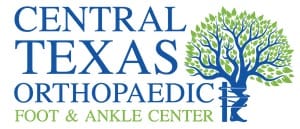Common Diagnoses:
Turf Toe
Turf Toe Overview
Turf toe is not a term you want to use when talking to a head football coach about their star running back or the ballerina before their diva debut. “Turf toe” is the common term used to describe a sprain of the ligaments around the big toe joint. Although it’s commonly associated with football players who play on artificial turf, it affects athletes in other sports including soccer, basketball, wrestling, gymnastics, and dance. It’s a condition that’s caused by jamming the big toe or repeatedly pushing off the big toe forcefully as in running and jumping.
Turf Toe Symptoms
The most common symptoms of turf toe include pain, swelling, and limited joint movement at the base of one big toe. The symptoms develop slowly and gradually get worse over time if it’s caused by repetitive injury. If it’s caused by a sudden forceful motion, the injury can be painful immediately and worsen within 24 hours. Sometimes when the injury occurs, a “pop” can be felt. Usually the entire joint is involved, and toe movement is limited.
Turf Toe Diagnosis
To diagnose turf toe, the doctor will ask you to explain as much as you can about how you injured your foot and may ask you about your occupation, your participation in sports, the type of shoes you wear, and your history of foot problems. The doctor will then examine your foot, noting the pattern and location of any swelling and comparing the injured foot to the uninjured one. The doctor will likely ask for an X-ray to rule out any other damage or fracture. In certain circumstances, the doctor may ask for other imaging tests such as a bone scan, CT scan, or MRI.
Turf Toe Treatment
The basic treatment for treating turf toe, initially, is a combination of rest, ice, compression, and elevation (remember the acronym R.I.C.E).This basic treatment approach is to give the injury ample time to heal, which means the foot will need to be rested and the joint protected from further injury. The doctor may recommend an over-the-counter oral medication such as ibuprofen to control pain and reduce inflammation. To rest the toe, the doctor may tape or strap it to the toe next to it to relieve the stress on it. Another way to protect the joint is to immobilize the foot in a cast or special walking boot that keeps it from moving. The doctor may also ask you to use crutches so that no weight is placed on the injured joint. In severe cases, an orthopaedic surgeon may suggest a surgical intervention.
It typically takes two to three weeks for the pain to subside. After the immobilization of the joint ends, some patients require physical therapy in order to re-establish range of motion, strength, and conditioning of the injured toe.

